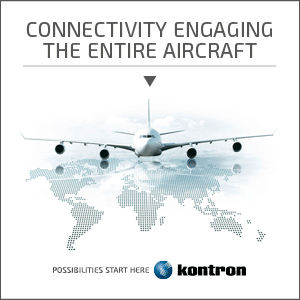Although Republican Congressional politicians and organizations quickly criticized President-elect Donald Trump’s 4 December tweeted proposal to levy a 35 percent tax on reimported goods from US companies that move jobs out of the country, American trade group, the Aerospace Industries Association (AIA), is remaining calm.
During a briefing this week after AIA’s annual media luncheon, president and CEO David Melcher noted that half of the group’s membership is associated with defense and national security, and accordingly are principally US-based. “When you look at who our members are of AIA, I’d say 50 percent are based on defense and national security, 50 percent are [based] on commercial,” he said.
Melcher pointed out that some larger US aerospace companies have manufacturing subsidiaries in other countries and principally bought those subsidiaries because the US companies couldn’t repatriate capital and cash to the USA.
Those aerospace companies chose not to repatriate capital to the USA largely because of the USA’s 39.1 percent statutory rate for corporate income tax. That is the highest rate among all 34 countries which are members of the Paris-headquartered Organisation for Economic Co-operation and Development (OECD).
Under current US tax laws, US companies which retain profits offshore can defer being taxed on them until the profits are returned to the USA. A 4 March report from Citizens for Tax Justice estimated that Fortune 500 companies are avoiding up to $695 billion in US federal income taxes on $2.4 trillion in offshore holdings.
“Companies will bring cash back if they see the rate is reasonable to do it. Companies now keep cash overseas,” said Melcher. He added that whatever corporate tax rate the new three-branch Republican government decides “will be decided by the administration and Congress”.
They’ll have to decide what is the art of the possible. Not the art of the deal. The art of the possible.
On the commercial side of the industry, as it pertains to Trump’s job-offshoring tax penalty tweet, Melcher said, “I think there is a legitimate question that needs to be addressed. If you create manufacturing for principally offshore markets – is that a good thing or a bad thing? That’s not selling back to the US, that’s serving offshore markets. Like any good tweet, you have to look at both sides of the argument and what makes the most sense for manufacturing.”
While many products made by US commercial-aviation equipment manufacturers in foreign countries officially have to be imported to the USA for installation in aircraft assembled by OEMs located in the USA, many of those aircraft are then exported to other countries, so the net result for those foreign-manufactured products are that they are sold to other countries.
Another factor – not mentioned by Melcher – concerning whether US aerospace jobs would move offshore is that many US aerospace-manufacturing jobs, such as in aero-engine manufacturing, require a highly trained and highly skilled workforce, and the United States has that requisite workforce at hand.
 Melcher also highlighted the enormous role the US aerospace industry plays in boosting US exports. “In 2015 our industry generated $605 billion in sales, with our commercial aerospace segment representing the largest share, some 46 percent, or $276 billion,” he said in his media luncheon address.
Melcher also highlighted the enormous role the US aerospace industry plays in boosting US exports. “In 2015 our industry generated $605 billion in sales, with our commercial aerospace segment representing the largest share, some 46 percent, or $276 billion,” he said in his media luncheon address.
“And last year aerospace and defense exports continued to shoot skyward, reinforcing an upward trend that has seen our gross exports increase by 63 percent over the past five years,” Melcher continued. “In 2015 US aerospace and defense manufacturers shipped a record $143 billion of exports, giving the country a positive trade balance of $82 billion in the aerospace segment. In all, we account for 10 percent of all US exports in goods, and we’re on track for another record-breaking year.”
Trump’s controversial tweets came three days after AIA member, Rockwell Collins, indicated it would help planned acquisition B/E Aerospace find manufacturing opportunities in “low-cost countries”.
Discussing four areas of cost synergy that Rockwell Collins had identified to implement when the planned acquisition closes, CEO Kelly Ortberg said in a 1 December presentation at a Credit Suisse investor conference that, “The fourth area is kind of taking advantage of low-cost manufacturing and engineering areas. We both have design centers in Hyderabad, India. There’s [sic] opportunities to consolidate that, as well as, I think, we’re maybe a little further ahead of B/E in their implementation of low-cost design work in India, and I think we can help them accelerate some of the work into their India design center. And then also some manufacturing opportunities in low-cost countries.” Rockwell did not answer RGN’s follow-up questions seeking specifics on the matter.
Additional reporting by Mary Kirby
Related Articles:








